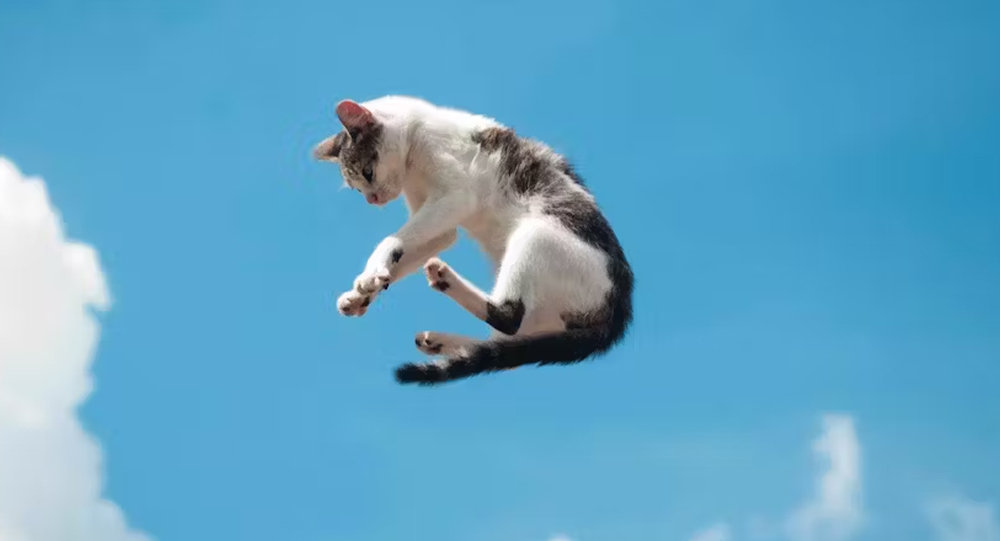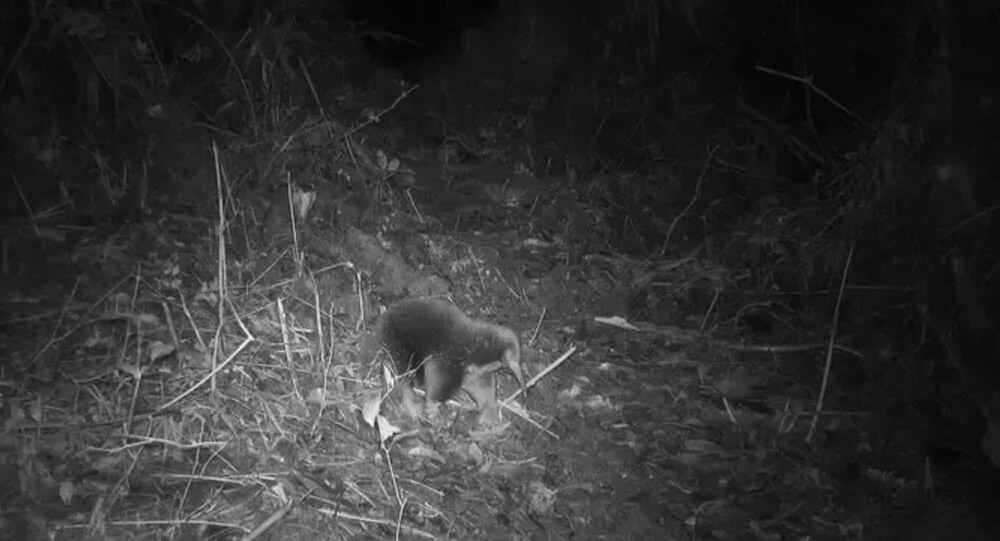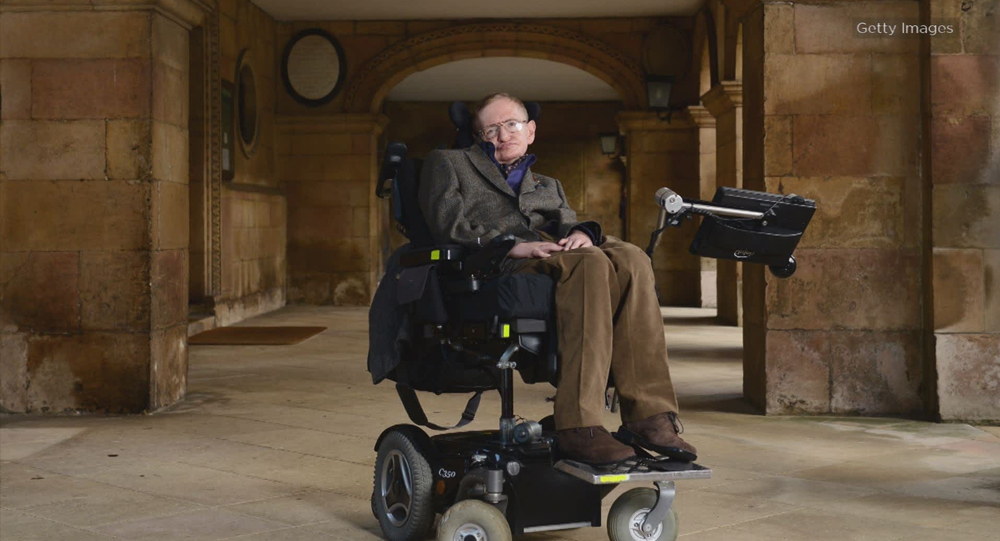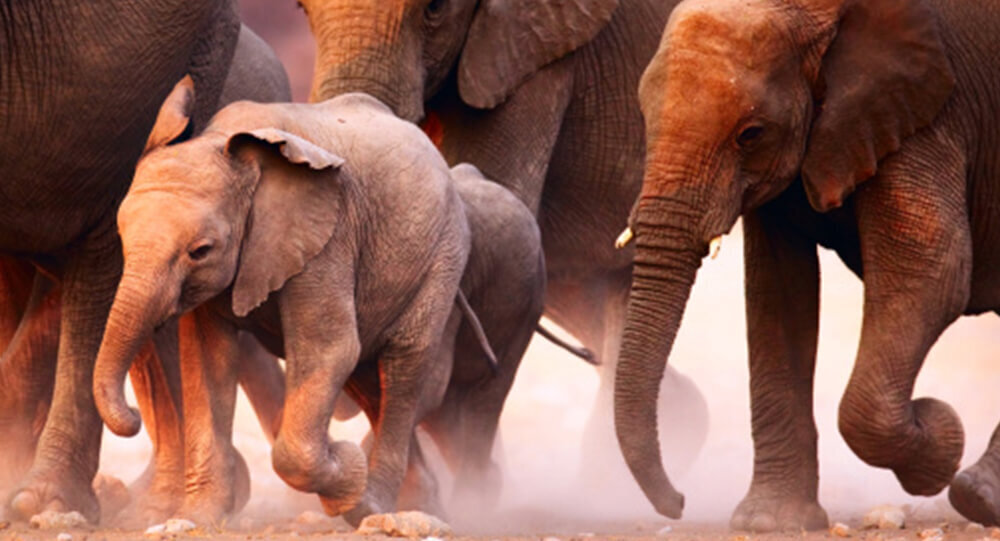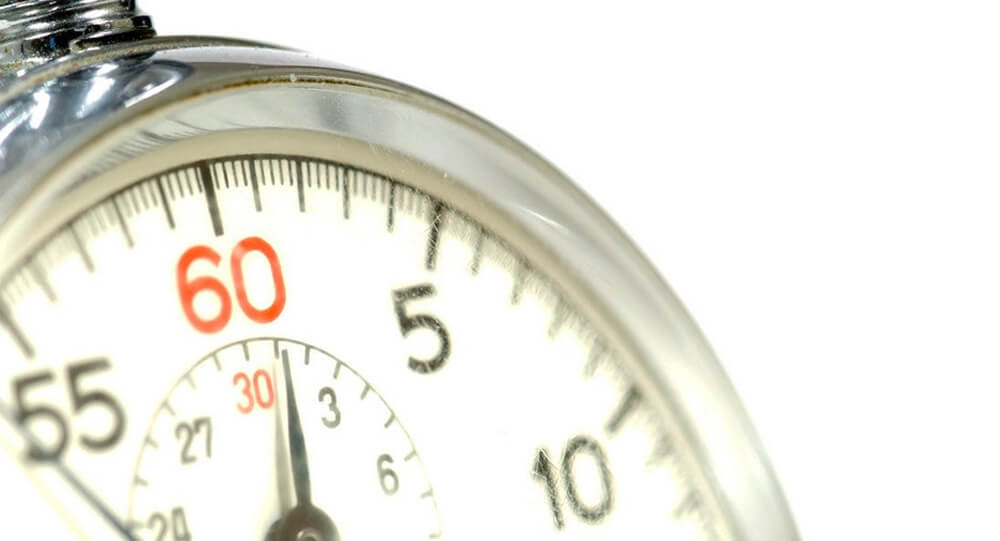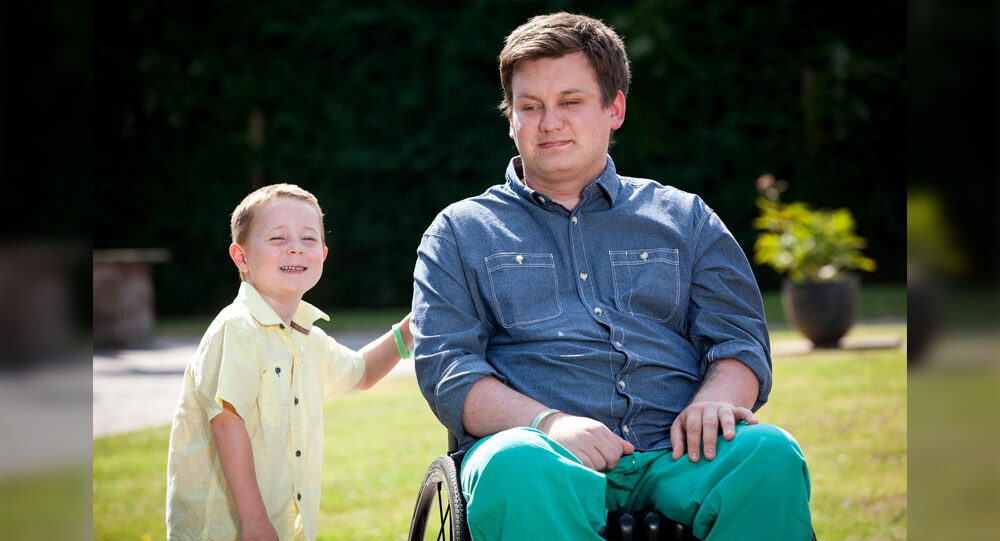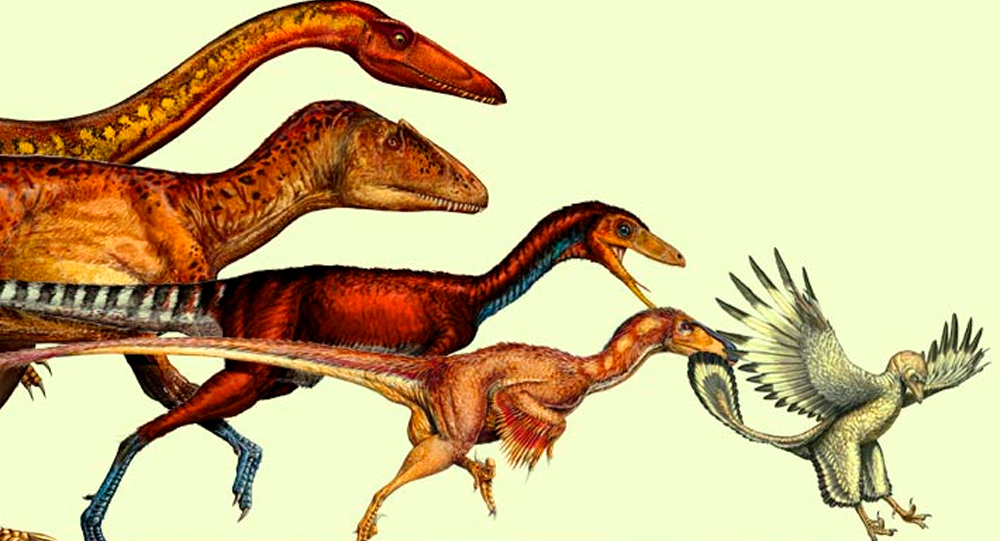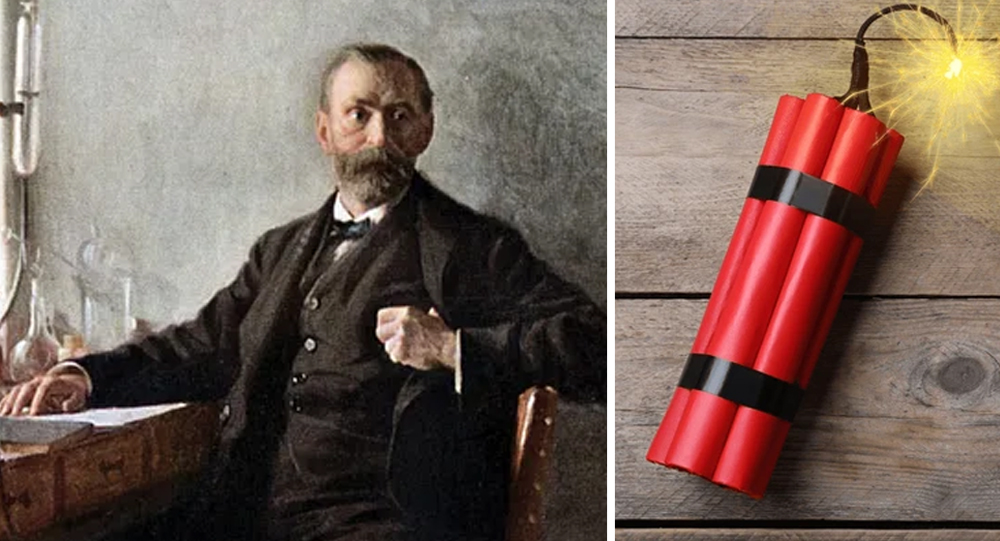Watching a cat fall and land perfectly on its feet feels like watching gravity-defying magic. This ability, known as the “righting reflex,” is an evolutionary adaptation that gives cats a better chance of survival. By reorienting their bodies midair, cats minimize injury from accidental falls—a frequent hazard given their penchant for exploring heights like trees and rooftops.
The reflex begins to develop when kittens are as young as three weeks old and is perfected by around seven weeks. This early mastery is crucial for survival as young cats learn to climb and navigate their environment.
The righting reflex is not exclusive to domestic cats; it’s also observed in other small vertebrates like rabbits and squirrels, suggesting a widely beneficial evolutionary trait for arboreal or cliff-dwelling animals.
Anatomical Features That Make the Reflex Possible
Cats boast an exceptionally flexible backbone that sets them apart from most mammals. Their spine includes more vertebrae—25 thoracic and lumbar vertebrae compared to humans’ 17—allowing extreme twisting and bending. This flexibility is key for their midair rotation.
Additionally, cats lack a rigid collarbone, meaning their shoulders can move independently. This anatomical feature allows the front legs to twist and align differently from the rear legs, aiding their segmented rotation during a fall.
Muscle control and proprioception—the sense of body position—play vital roles too. Cats have precise motor control to manipulate their limbs and spine rapidly to achieve the ideal orientation.
The Physics: Conservation of Angular Momentum in Action

The cat’s ability to turn mid-fall seems paradoxical due to conservation of angular momentum, a principle in physics stating that an object cannot change its total angular momentum if no external torque acts on it. Yet, cats defy this by dividing their body into two segments—front and rear—that rotate in opposite directions.
Here’s how it works: the cat bends at the middle of its spine, flexing the front half of the body one way while counter-rotating the rear half slightly in the opposite direction. By tucking its front legs in and extending its rear legs, the cat alters the moment of inertia—how mass distribution affects rotational movement—of both halves. This allows the front half to rotate up to 90 degrees while the rear half moves less.
By then reversing this limb positioning, the rear half completes the rotation, turning the cat right side up without violating physical laws. This segmented twisting is repeated as necessary until the cat faces downward and prepares to land.
The Role of the Vestibular System: Sense and Balance
Cats’ inner ears contain the vestibular apparatus, a complex system that provides sensory input about orientation and acceleration. This system helps the cat determine up from down during a fall instantly.
Minute changes in head position are detected, triggering reflexive spinal and limb muscle responses to execute body rotations seamlessly. Cats with vestibular disorders often struggle with balance and the righting reflex, underscoring the system’s importance.
Combined with keen vision, the vestibular system allows cats to assess their environment and adjust landings to minimize impact.
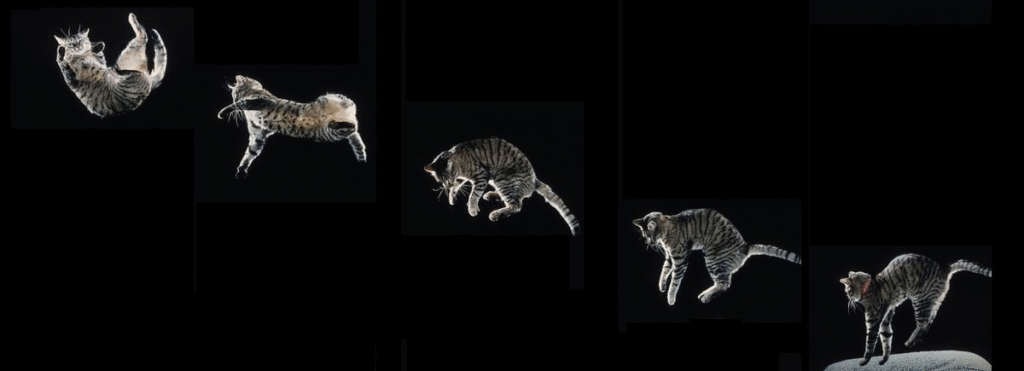
From Air to Ground: How Cats Prepare for Impact
After reorienting midair, cats spread their legs downward to increase drag, effectively slowing their fall—a process sometimes called “parachuting.” By increasing surface area, they reduce terminal velocity, enabling gentler landings.
The legs act like shock absorbers: upon impact, cats bend their joints and distribute force evenly through their muscular limbs and flexible spine, preventing injury.
Veterinarians note cats can survive falls from extraordinary heights due to this adaptation, a phenomenon sometimes termed “high-rise syndrome.” However, the righting reflex is less effective from very low heights, where there isn’t enough time to twist and prepare.
Limitations and Misconceptions
While cats have a remarkable ability to land safely, the “cats always land on their feet” phrase isn’t entirely true. Short falls, lack of space to stretch, or obstacles can result in injury.
Older cats or those with health issues may lose some agility and reflex speed. The reflex also does not grant immunity to impact-related injuries like broken bones or internal trauma.
Understanding these limitations helps caretakers prevent accidents and provide safe environments for their feline friends.
Fascinating Facts About the Cat Righting Reflex
- Kittens begin exhibiting the righting reflex at around 3 weeks and perfect it between 6 and 9 weeks.
- Cats have 7 more thoracic and lumbar vertebrae than humans, contributing to their flexibility.
- Cats without tails still perform the righting reflex well, showing the tail is useful but not essential.
- The divided body rotation was first studied scientifically in 1894, known as the “falling cat problem.”
- A cat’s nerves and muscles react in less than half a second to initiate the righting reflex upon falling.
- Experimental slow-motion footage shows cats consistently rotate their head first, then front legs, then rear legs.
- Cats’ unique blend of anatomy and physics remains a popular teaching example in biomechanics and physics classrooms.
- The righting reflex protects vital organs by spreading landing impact forces evenly over the cat’s body.
The Righting Reflex as a Survival and Evolutionary Strategy
Trees, rocky cliffs, and elevated perches are common habitats or escape routes for wild felines. The righting reflex enables cats to survive accidental falls, a frequent risk in their arboreal or vertical environments.
This genetic advantage contributes to wild populations’ success and domesticated cats’ mysterious agility.
The reflex also promotes cats’ natural curiosity, allowing safe exploration of high places indoors or outdoors—a characteristic that endears them to millions worldwide.
Final Thoughts: The Graceful Physics of Cats
Watching a cat twist and land flawlessly encapsulates a breathtaking interplay of biology, physics, and evolution. What seems like effortless grace is the product of millions of years of refinement, exquisite anatomy, and adherence to fundamental physical laws.
Cats’ righting reflex stands as a vivid reminder of nature’s ingenuity, the elegance of physics in motion, and how survival drives remarkable capabilities.
Next time a feline leaps and lands, marvel at the intricate science that makes it possible, and share this article to spread awe for one of nature’s most enchanting adaptations.
Sources & Further Reading:
- Wikipedia: Cat Righting Reflex (2024)
- National Center for Biotechnology Information: Cat Ballooning and Righting Reflex Studies (2018)
- Kinship.com: Understanding Cats’ Righting Reflex (2024)
- PhysLink.com: How Cats Land on Their Feet (2024)
- Scientific American: The Physics of Cat Landings (2023)

For the First Time in 60 Years, Scientists Discover a 'Lost' Echidna Species
An expedition team in Indonesia discovered the elusive, egg-laying animal (Echidna) named after David Attenborough, which had not been seen since 1961.

Stephen Hawking’s Warning: Humanity Has Less Than 200 Years to Escape Earth’s Limits
Stephen hawking says humanity won't survive without leaving earth. In fact, human beings may have less than 200 years to figure out how to escape our planet

Earthquakes: Can Animals Really Predict Them?
In 1975, when officials in the Chinese city of Haicheng were alarmed by odd and anxious behaviors of dogs and other animals. These observations led them to order 90,000 residents to evacuate the city. Only a few hours later a 7.3 magnitude earthquake destroyed nearly 90% of the city’s buildings.

Megamouth Shark And Her Babies Found Dead In The Philippines
Filipino zoologists have recorded a pregnant megamouth shark for the first time ever since the rare aquatic specie was discovered in 1974.

The story of Lionel the Lion-Faced Man, Stephan Bibrowski
Stephen Bibrowski, also known as Lionel the Lion-faced Man, was a well-known sideshow entertainer. His entire body was covered in long hair, giving him the appearance of a lion; this was most likely due to a rare condition known as hypertrichosis. Lionel traveled to the United States in 1901 and began performing with the Barnum and Bailey Circus.

Ocean Atlas: Exploring the World’s Largest Underwater Sculpture in the Bahamas
On the western coast of New Providence in Nassau, Bahamas, there is a tourist attraction that you can dive down to see. Called Ocean Atlas, this is the largest single underwater sculpture ever installed. It depicts a local Bahamian girl carrying the weight of the ocean, in reference to the Ancient Greek myth of Atlas holding up the heavens.

Medieval Medicine: A 1,000-year-old onion and garlic salve kills modern bacterial superbugs
Scientists recreated an Anglo-Saxon manuscript-based 9th century onion and garlic eye remedy and discovered that it killed 90% of antibiotic-resistant staph bacteria (MRSA).

The extraordinary case of Olivia Farnsworth, who hit by a car and dragged down the street without pain because of chromosome 6 deletion
In 2016, 7-year-old Olivia Farnsworth was hit by a car and dragged down the street, but she did not feel a thing. That is because of a rare condition called “chromosome 6 deletion,” which causes her to feel no pain. She also does not experience hunger or exhaustion.

How did Howard Florey discover penicillin
Penicillin was discovered by Alexander Fleming, but he never attempted to turn it into an antibiotic. It wasn't until ten years later that Howard Florey discovered Fleming's obscure paper and understood the mold's potential. Up to 200 million lives may have been saved as a result of Florey's work.

Why are there 24 hours in a day and 60 minutes in an hour
Ancient Babylonians did math in base 60 instead of base 10. That's why we have 60 seconds in a minute and 360 degrees in a circle.

Mystery of 300-year-old mummified mermaid is being probed
There is a 300-year-old mummified mermaid with 30 centimetres tall and features a human-like head, two hands with what appear to be fingernails, and its lower body that look like a fish tail. The “mermaid mummy” is being probed by Japanese scientists in an attempt to unravel the mystery of its existence.

Woman's transplanted 'man hands' became lighter and more feminine over time
After losing both arms in an accident, an Indian girl received limbs from a male donor. The donor hands, which were formerly huge and hairy, changed skin tone and became thin and feminine over time to mix in with her body.

Man discovers he has 3 kidneys after going to doctor for severe back pain
In 2020, a 38-year-old Brazilian man visited his doctor for severe back pain and was shocked to find out that he has three kidneys instead of just two.

Inspiring story of Jono Lancaster, Abandoned by His mother at birth for this 'defect' on his face
When Jono Lancaster was just 36 hours old, his parents left him for adoption because he was suffering from Treachers Collins Syndrome, a genetic disorder which hampers facial bones development. Now he is an inspirational speaker, a professional model and a teacher, giving inspiration to millions

What makes bananas radioactive?
Yes, It is true that bananas contain radioactive substances. But the same can be said for spinach, potatoes, oranges, Brazil nuts, kitten litter, granite counter tops, even the air you breathe! Radioactivity is unavoidable and all around us. So, what exactly is it?

Scientist injects himself with 3.5m yr old bacteria for immortality and amazing happens
Russian scientist injected himself with a 3.5 million-year-old strain of bacteria, just to see what would happen. According to Brouchkov, Bacillus F has a mechanism that has enabled it to survive for so long beneath the ice, and that the same mechanism could be used to extend human life, too.

Man gave his stem cell fund to a disabled boy
Dan Black, who was paralyzed in a bike accident, spent four years raising 20,000 for a stem cell treatment that could let him walk again. However, after learning about a five-year-old boy with cerebral palsy, he donated the funds for the boy's medical treatment in order to enable him to take his first steps.

How Dmitri Mendeleev Developed the periodic table of the elements
1850 Dmitri Mendeleev walked almost a thousand miles to Moscow so he could apply for the University of Moscow. Although he was not accepted, he walked to St. Petersburg where he was accepted, And with that education, he developed the the periodic table of the elements

The Evolution of Flight: From Dinosaurs to Birds – A Journey Through Time and Science
Flight is one of nature’s most remarkable adaptations, but its origins trace back millions of years before modern birds took to the skies. Emerging from theropod dinosaurs during the Jurassic period, birds evolved feathers, wings, and lightweight bodies that enabled powered flight. This detailed narrative explores the fascinating evolutionary path from ground-dwelling dinosaurs to the aerial masters of today, blending science, intriguing fossil finds, and surprising trivia about our feathered ancestors.

George Dantzig solved two famous “unsolved” problems in statistics mistakenly as assignment
In 1939, George Dantzig arrived late to his statistics class. On the board were two famous “unsolved” problems in statistics written as an example by his professor. Dantzig mistook the examples for homework assignments. He solved the “unsolved” problems and submitted the homework to his professor a few days later. His solutions earned him a doctorate.

The Mystery of Canada's Magical Spotted Lake
Lake Khiluk, the world's most mineralized lake, and one of the most mysterious places on Earth. Each of these spots has a distinct chemical content and is said to cure various diseases.

The Science Behind Why We Dream and What It Means
Dreams have fascinated humanity for millennia—enigmatic stories that unfold in sleep, weaving memories, emotions, and symbols. Modern science is now unraveling why we dream and exploring what these nightly narratives reveal about our brain, emotions, and waking lives. Journey through the latest discoveries on the science of dreaming and its meaningful reflections in our psyche.

Woman's memory reset every two hours after traumatic accident
Riley Horner, an Illinois teenager was accidentally kicked in the head. As a result of the injury, her memory resets every two hours, and she wakes up thinking every day is June 11. Riley keeps detailed notes of events happening throughout the day, and sets an alarm on her phone every two hours to remind her to review them. Riley also keeps a calendar in her room to remind her what day it is? As she wakes up every morning confused, thinking it's still June 11.

Dr. Leonid Rogozov: the surgeon who removed his own appendix.
Dr. Leonid Rogozov was a legendary surgeon who operated on himself in 1961 to remove an inflamed appendix.

How a Headache Cure Experiment Led to the Invention of Dynamite
Alfred Nobel discovered dynamite while experimenting with nitroglycerin, a volatile liquid he also took in tiny doses for headaches. Ironically, the explosive that made him wealthy and feared also eased pain—later inspiring his legacy as founder of the Nobel Prizes.

